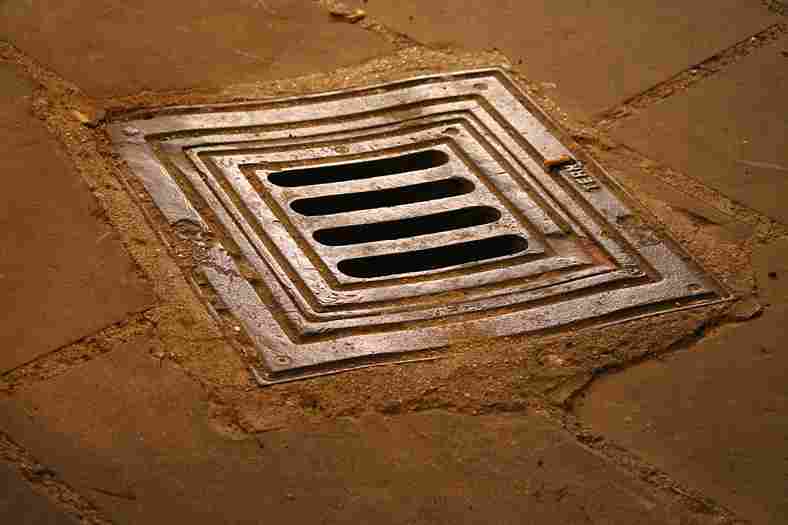If you have recently placed your washer in a room or basement, you might like to drain the washer into a floor drain, but before doing this, a few points you should have to consider.
Choosing the right drain system is necessary to avoid issues during laundry. However, drawing a washing machine into a floor drain is included in the code.
Yes, you can drain a washer into a floor drain, but make sure water will not overflow. As the drain-hose-waste discharge rates are higher, the floor drain should have a 3 – 4 inch pipe to handle the flow. However, If a blockage develops in the drain pipe, there will be a risk of water overflow, and water can back up onto the floor of your room.
Let’s dive into the guide to learn more about whether you can drain a washer into a floor drain and how.

Table of Contents
How to Drain a Washing Machine into a Floor Drain?
Before draining a washing machine into a floor drain, verify that can you drain the washer into the floor drain or not. If the results are positive, follow simple steps and enjoy laundry in your room.
Here’s how to drain a washing machine into a floor drain:
- First, place your washing machine near the floor drain. As we know, the washer’s drain hose commonly has a small length.
- Next, hold the drain hose from its draining endpoint, and directly put it inside the floor drain.
- Use 28 inches from the floor siphon break with it if the drain hose is not available.
- Open the floor drain cover and put the washer hose into it.
- Make a wash cycle and check if the water drains correctly or not. All done.
Can Washing Machine empty into Floor Drain?
A washing machine is a device that discharges wastewater at high rates. When it comes to draining the washer, it requires a correct and long-lasting drain system.
The draining connection must have a 3 – 5 inch pipe to handle the high discharge rate.
You can empty your washing machine into a floor drain, but it will only be possible when the floor drain has supportive specifications such as a 3 – 5 inch drain pipeline, the capacity to prevent overflow, and no blockage.
However, if the floor drain has a 1 – 2 inch pipe, it cannot be used to run the washing machine drain into it.
If you try to empty the washer into a floor drain where the pipeline is 1 – 2 inches, it will create an overflow, and water will come onto the floor.
Once the water comes up onto the floor, there is a risk of damage since dampness can damage the floor.
The safety of the floor is a critical factor to consider when using its drain for emptying the washing machine. Verify that the floor drain is clean and has no clog or blockage inside the pipeline.
It’s unattainable that we can guess that a room’s floor drain is enough to empty a washing machine without checking its floor drain specifications.
How to Connect a Washing Machine Drain Hose to a Floor Drain?
Sometimes directly putting a drain hose into a floor drain connection does not fit properly, which needs extra effort to correct the drain system.
Use a 90-angle connector or Elbow Pipe Connector. Fix the connector at the end of the drain hose and put it inside the floor drain. Run a wash cycle and test the flow of water, testing will show you working and verify if overflow is causing or not.
You can easily find elbow pipe connectors in offline and online modes. Make sure the connector is made of good material. So you can use it without worrying about any issues.
Floor Drain Floods when using Washing Machine?
If you have noticed water back up on the floor and drain floods when using the washing machine, there might be an issue with the drain system. Checking the drain is necessary to avoid overflow. If you’re facing a draining problem like this, check the following cases and their fixes.
Clog or Blockage: Sometimes, we forget to check the drain system, and drain pipes are usually clogged when waste gets stuck in the line. Once the pipeline is clogged, water cannot run smoothly in the drain.
As washing machines discharge water at a high rate, it becomes difficult to handle the flow of water from a clogged pipeline.
Sometimes we notice water running slowly into the drain, and that slow flow is a sign the drain is half clogged inside. Cleaning the drain after some time can help you prevent blockage and the development of clogs.
Less Draining Capability: If you’re using your room’s floor drain connection and the washer is not draining properly since the water coming up onto the floor.
This case is happening because your floor drain is not capable of supporting the water discharge rate of your washer so you cannot use that floor drain anymore.
Some floor drains have small size pipes which are not enough to run much water at once. If the floor pipe is 1 – 2 inches, floor drains will flood when using a washing machine.
Conclusion
First, you have to verify if the floor drain is capable of supporting the washer’s discharge rate or not. However, you can use your room’s draining system to drain wastewater. The drain hose must be 28 inches long from the floor. Connect the below connector on the hose and connect it with the base drain connection.
